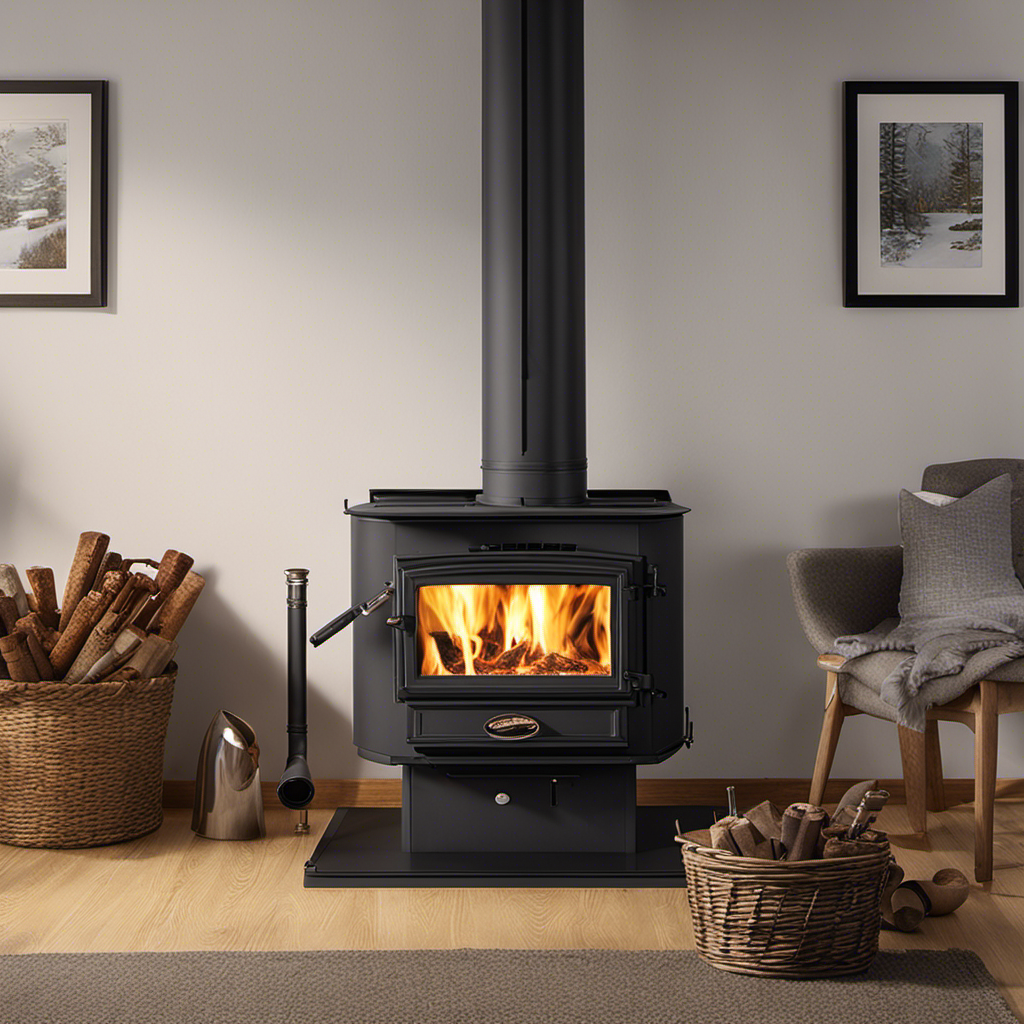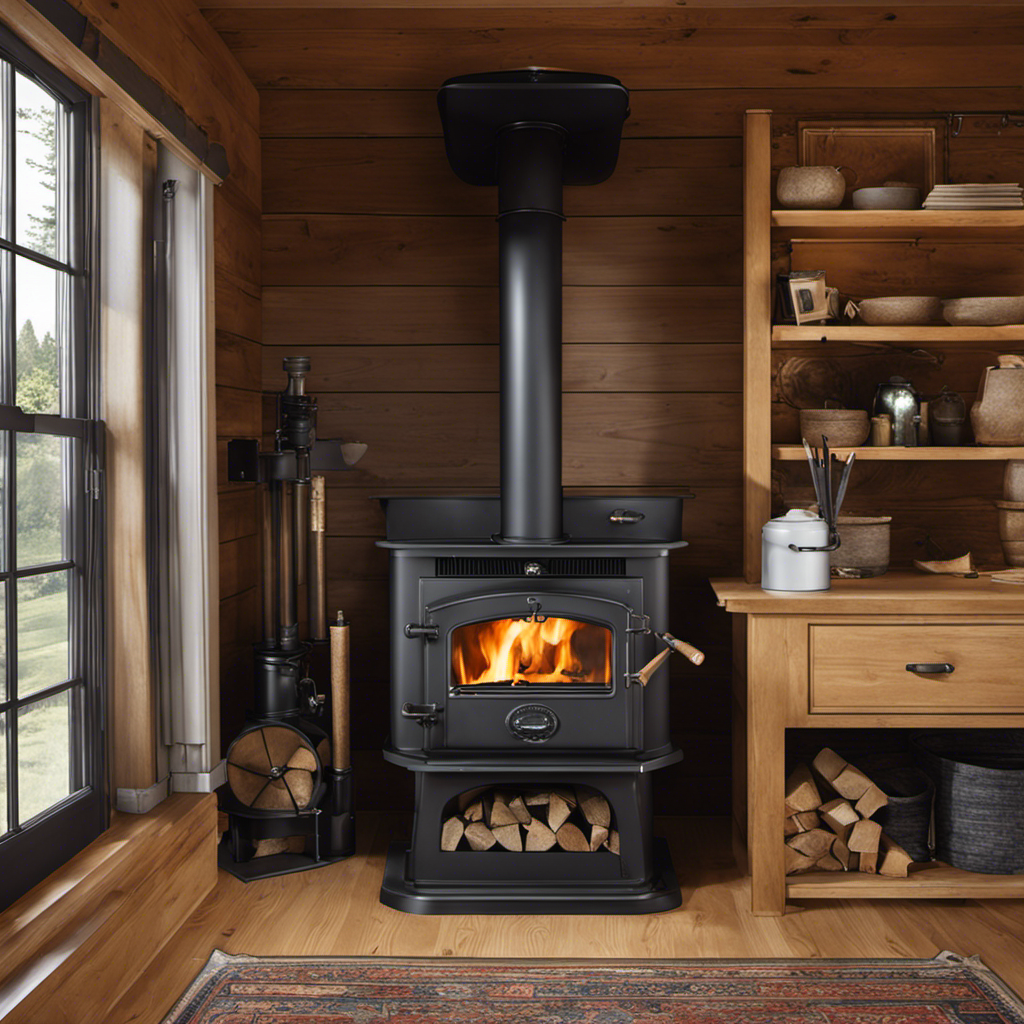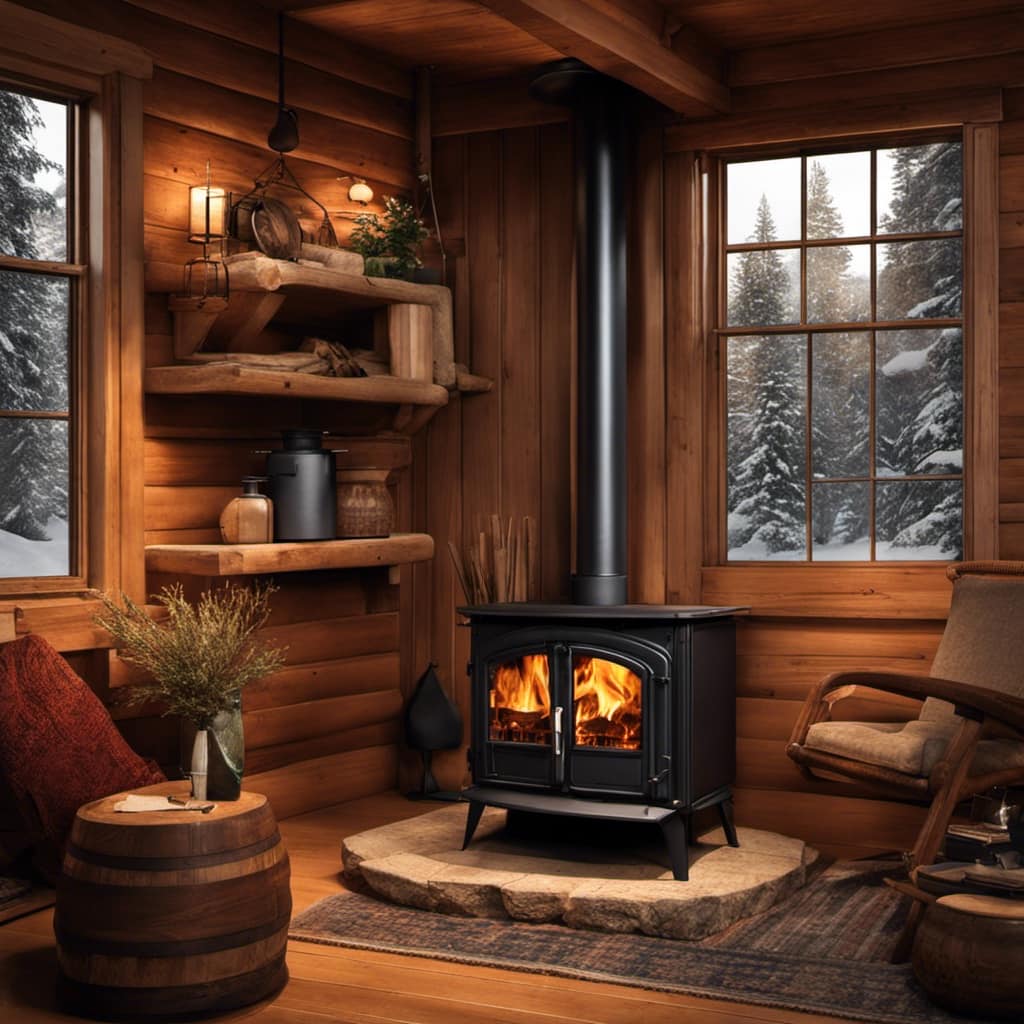I have always been intrigued by the impressive efficiency and effectiveness of wood stoves.
Did you know that using a Vogelzang wood stove can reduce your heating costs by up to 30%?
In this article, I’ll guide you through the process of first firing your Vogelzang wood stove.
From checking the components to adjusting the airflow, you’ll learn the necessary steps to ensure a safe and efficient fire.
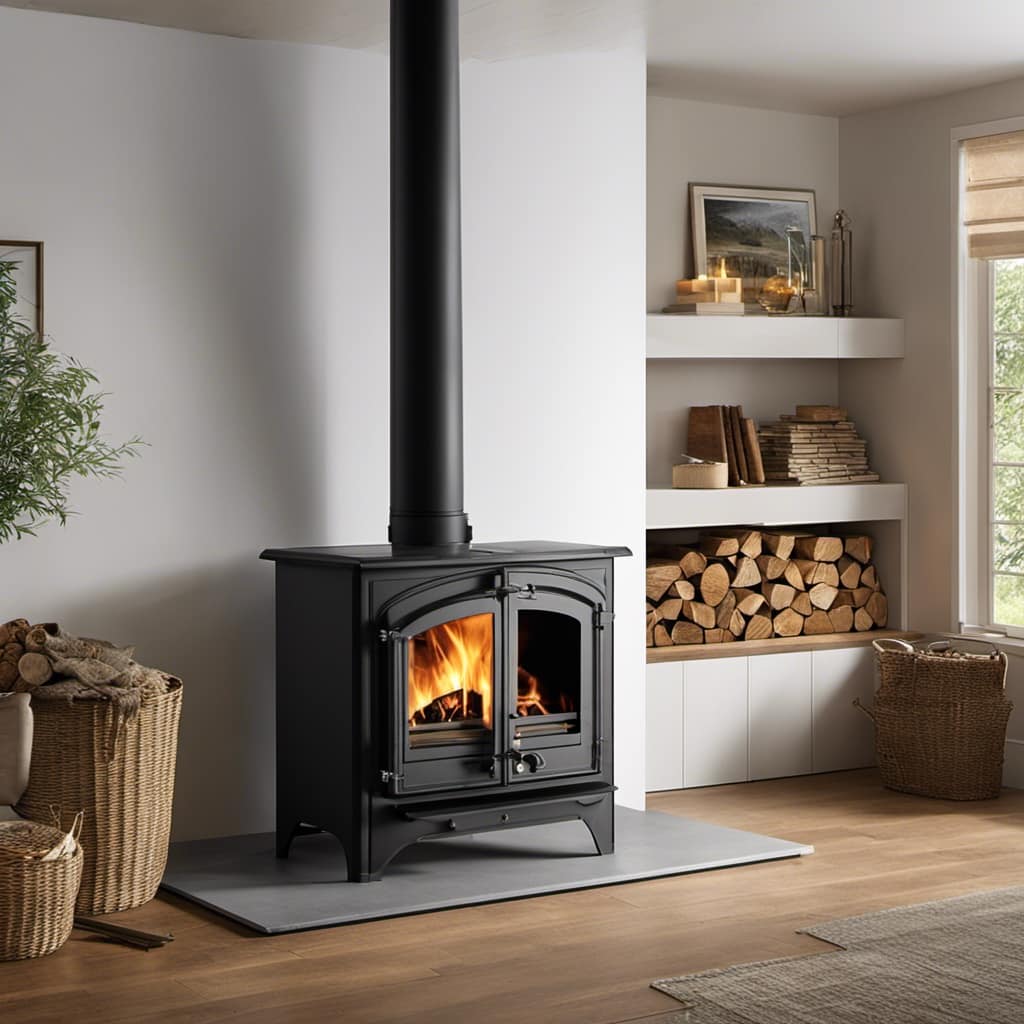
Let’s get started and harness the warmth of your wood stove!
Key Takeaways
- Inspect the firebox, door, and chimney for damage or wear
- Arrange kindling and logs for proper airflow and combustion
- Use hardwoods like oak, maple, and birch for slow and efficient burning
- Place small pieces of dry kindling at the bottom of the stove
Checking the Components and Safety Precautions
I’m checking the components and taking safety precautions before using the Vogelzang wood stove.
The first thing I do is inspect the components to ensure everything is in proper working condition. I examine the firebox, the door, and the chimney for any signs of damage or wear. I also check the gaskets and seals to make sure they’re intact and functioning correctly.
Next, I take safety measures to prevent any accidents or mishaps. I ensure there’s a fire extinguisher nearby and that smoke detectors are working properly. I also make sure the stove is placed on a non-combustible surface and that there’s a clear area around it.
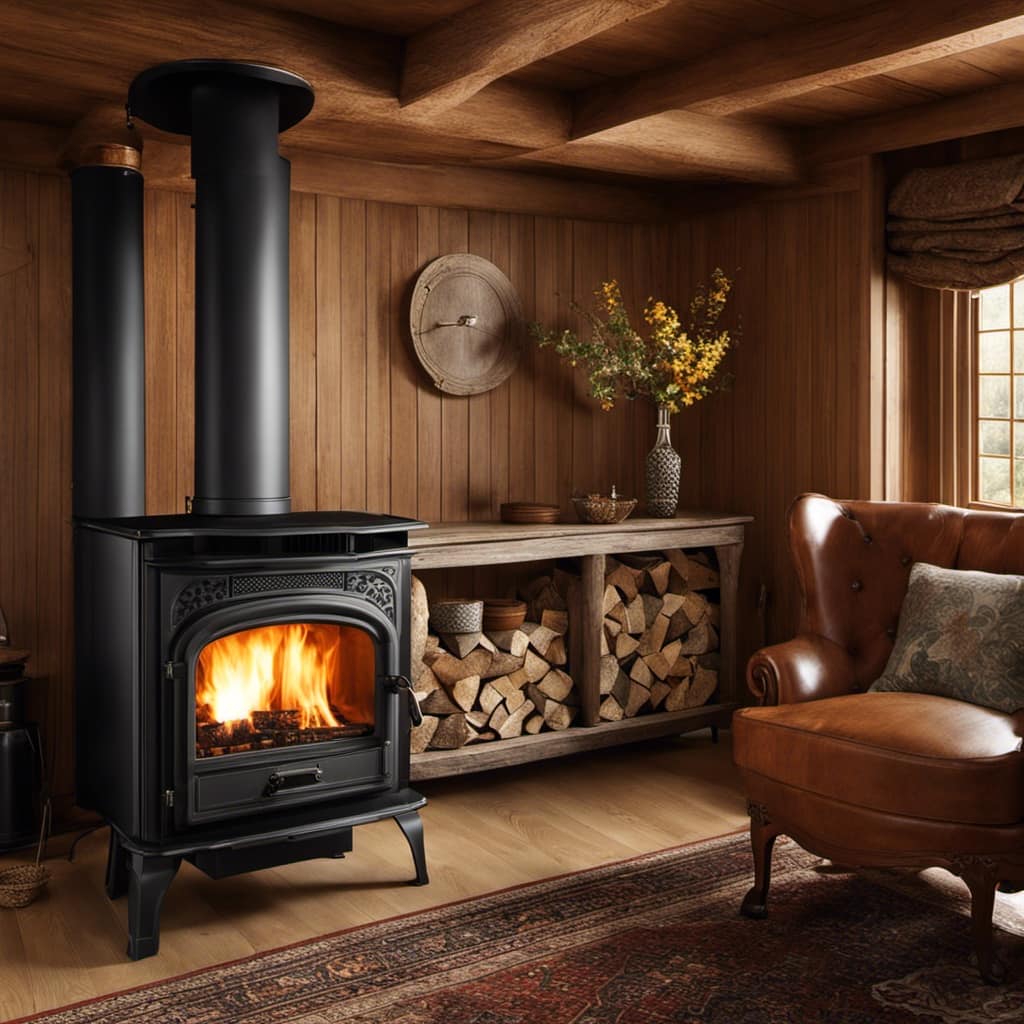
Following these component inspections and safety measures, I feel confident and ready to start my first fire in the Vogelzang wood stove.
Preparing the Wood and the Stove
Before starting the fire, I carefully arrange the kindling and logs in the wood stove to ensure proper airflow and efficient combustion. Choosing the right firewood is crucial for a successful and long-lasting fire.
Hardwoods such as oak, maple, and birch are ideal as they burn slowly and produce more heat. Softwoods like pine and cedar, on the other hand, burn faster and are great for getting the fire started.
Properly stacking the wood is also important. I make sure to leave enough space between the logs for air to circulate, allowing the fire to breathe. Additionally, I stack the wood in a crisscross pattern, creating a stable structure that promotes even burning.
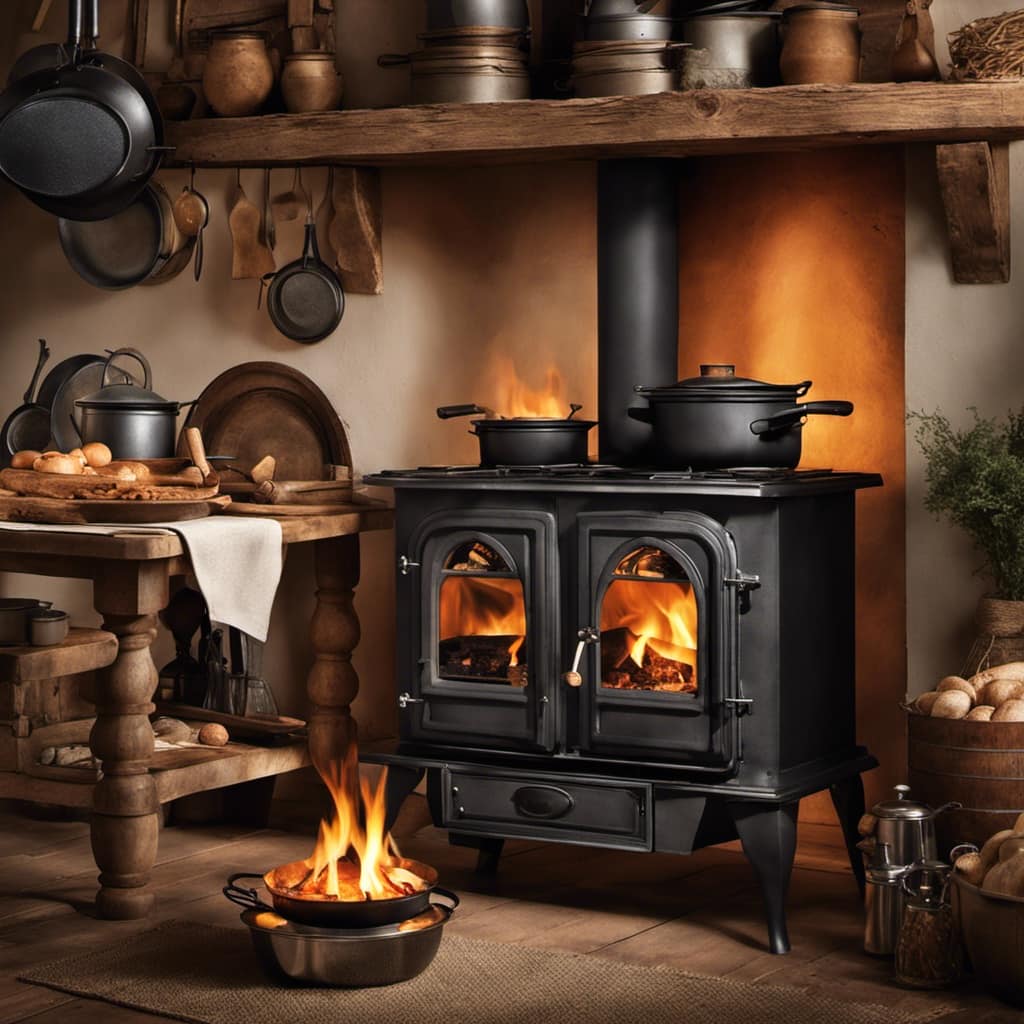
Building the Fire Properly
To build the fire properly, I add newspaper and kindling to the wood stove.
Fire safety is of utmost importance, so it’s crucial to ensure that the firewood is stored correctly. It should be kept in a dry and well-ventilated area, away from any flammable materials. This helps prevent the risk of accidental fires.
Once I’ve placed the newspaper and kindling in the stove, I carefully arrange the firewood on top, making sure to leave enough space for air circulation. This allows for proper combustion and efficient heat output.
With the firewood properly stored and the fire set up, I can now move on to igniting the fire and adjusting the airflow to achieve the desired temperature and burn rate.
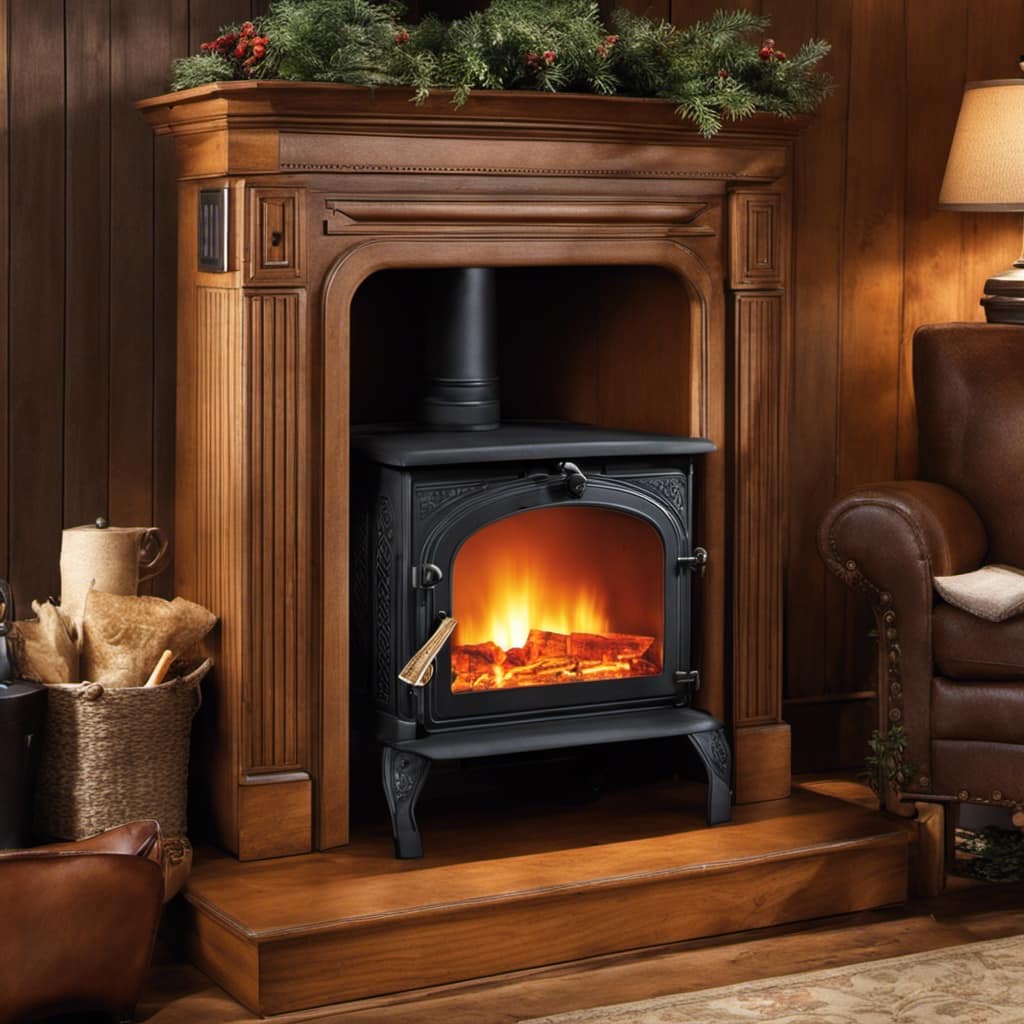
Igniting the Fire and Adjusting the Airflow
I carefully ignite the fire and adjust the airflow to ensure efficient heat distribution and maintain the desired temperature in the wood stove. Here’s a step-by-step guide on how to do it:
Ignition: Start by placing small pieces of dry kindling at the bottom of the stove. Then, carefully light the kindling using a match or a lighter. Make sure to keep the stove door slightly ajar to allow proper airflow.
Airflow Adjustment: Once the fire is lit, adjust the air intake damper to control the amount of oxygen entering the stove. This will help regulate the burn rate and temperature. Opening the damper will increase airflow, resulting in a hotter fire, while closing it will reduce airflow and lower the temperature.
Temperature Control: To maintain the desired temperature, monitor the thermometer on the stove. If the temperature gets too high, reduce the airflow by partially closing the damper. Conversely, if the temperature is too low, increase airflow by opening the damper slightly.
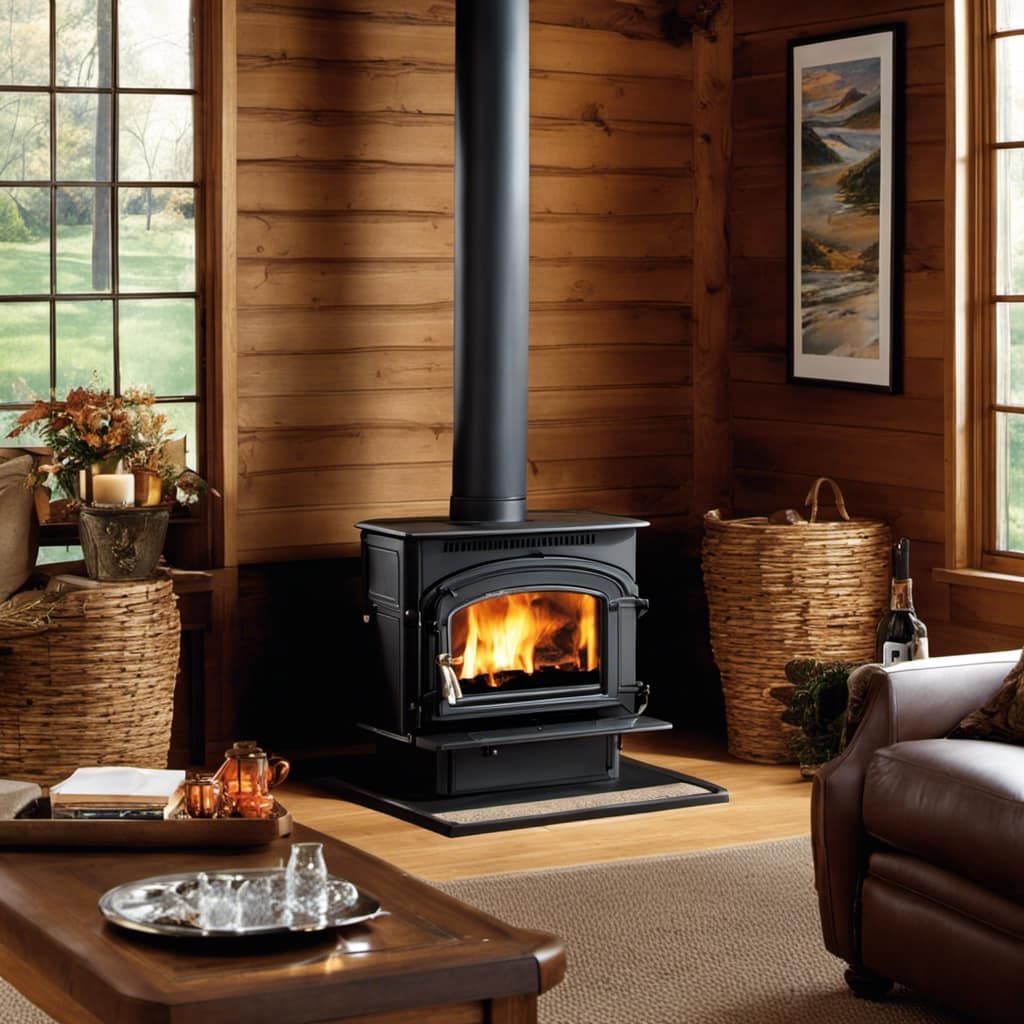
Troubleshooting Common Issues: If you encounter issues like a smoky fire or difficulty in igniting, check if the damper is fully open and if the chimney is clear of any obstructions. Additionally, make sure the wood is dry and properly seasoned to ensure efficient burning.
Monitoring and Maintaining the Fire
How often should I check the wood stove to ensure the fire is burning properly?
When it comes to monitoring and maintaining the fire in a wood stove, regular checks are crucial. I recommend checking the wood stove every 30 minutes to ensure the fire is burning at an optimal level. This allows you to make any necessary adjustments to the airflow and keep the firewood burning efficiently.
Additionally, it’s important to have a proper firewood storage system in place. This ensures that the firewood is dry and seasoned, which helps maintain a steady and efficient burn.
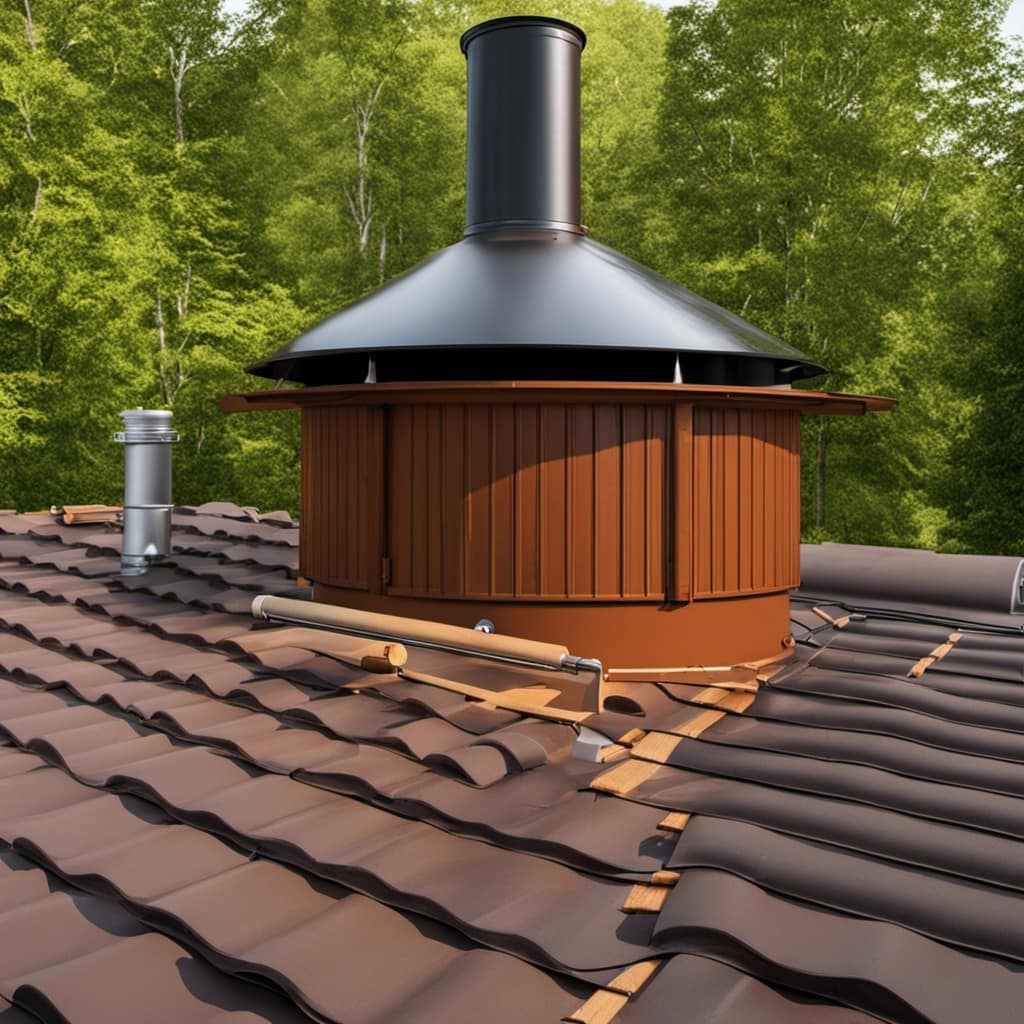
Lastly, don’t forget to clean the ashtray regularly. This prevents ash buildup, allowing for proper airflow and preventing any potential fire hazards.
Can the same method be used to fire a wood stove in a video game as in real life?
In the video game, replicating the exact method to fire a wood stove in house as in real life may not be necessary. However, for a realistic gaming experience, incorporating the same steps such as gathering wood, arranging the logs, and igniting the fire can add immersion and authenticity.
Frequently Asked Questions
How Long Does It Typically Take for a Vogelzang Wood Stove to Heat up a Room?
Typically, it takes about 30 minutes for a Vogelzang wood stove to heat up a room. To maximize heat output, ensure proper maintenance by cleaning the stove regularly and using dry, seasoned wood.
Can I Use Any Type of Wood in My Vogelzang Wood Stove?
I can use different types of wood in my Vogelzang wood stove, but proper wood storage is important. It’s like choosing the right ingredients for a recipe, ensuring a smooth and efficient burn.
Is It Necessary to Clean the Chimney Regularly When Using a Vogelzang Wood Stove?
Regular chimney cleaning is crucial when using a Vogelzang wood stove. It ensures proper airflow, prevents chimney fires, and prolongs the stove’s lifespan. Remember to schedule annual inspections and cleanings to maintain optimal performance and safety.
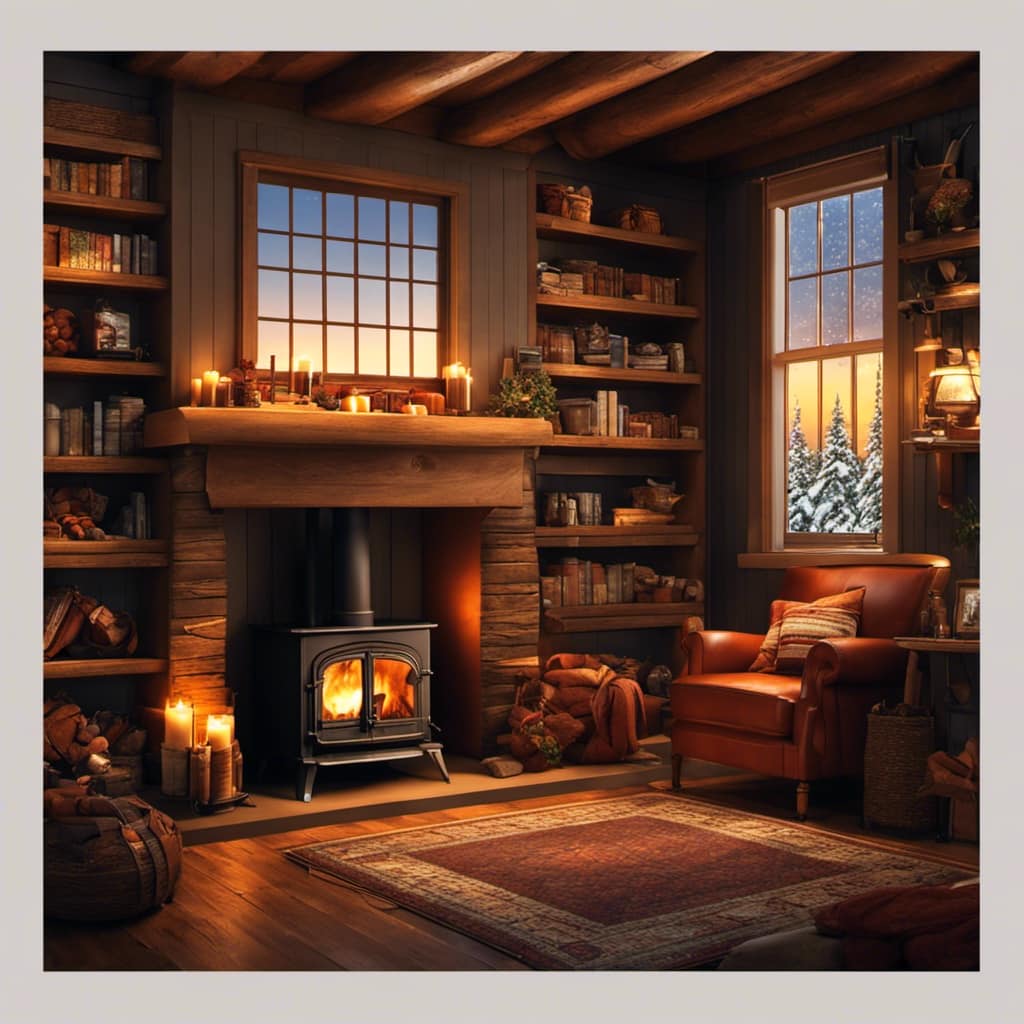
What Are Some Common Signs That Indicate My Vogelzang Wood Stove Needs Maintenance?
When my Vogelzang wood stove started smoking excessively, I realized it needed maintenance. Common signs include poor draft, difficulty starting a fire, and black soot buildup. Troubleshoot by checking the chimney, gaskets, and air vents.
Are There Any Specific Guidelines for Safely Extinguishing the Fire in a Vogelzang Wood Stove?
When it comes to safely extinguishing a fire in a Vogelzang wood stove, it is crucial to follow specific guidelines. Additionally, proper maintenance is essential to ensure the stove functions efficiently and safely.
Conclusion
In conclusion, firing up your Vogelzang wood stove is a simple process that requires careful preparation and attention to detail. By following the safety precautions, properly preparing the wood, and building the fire correctly, you can enjoy a warm and cozy fire in no time.
Remember, ‘where there’s smoke, there’s fire’ – so keep an eye on the airflow and maintain the fire to ensure a safe and enjoyable experience.

Growing up surrounded by the vast beauty of nature, Sierra was always drawn to the call of the wild. While others sought the comfort of the familiar, she ventured out, embracing the unpredictable and finding stories in the heartbeat of nature.
At the epicenter of every remarkable venture lies a dynamic team—a fusion of diverse talents, visions, and passions. The essence of Best Small Wood Stoves is crafted and refined by such a trio: Sierra, Logan, and Terra. Their collective expertise has transformed the platform into a leading authority on small wood stoves, radiating warmth and knowledge in equal measure.




